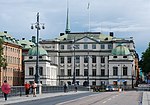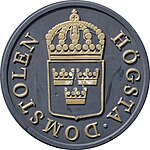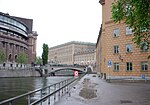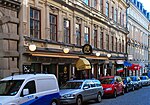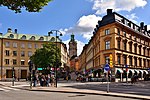Myntgatan
Odonyms referring to a buildingStockholm road stubsStreets in Stockholm
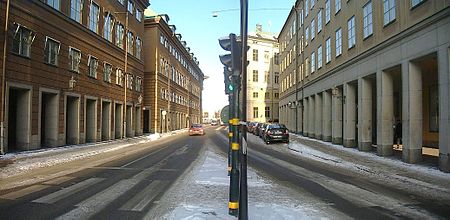
Myntgatan (Swedish: [ˈmʏ̂ntˌɡɑːtan], "the Coin Street") is a street in Gamla stan, the old town in central Stockholm, Sweden. Stretching west from Mynttorget over to Riddarhustorget, it is crossed by the streets Salviigränd, Rådhusgränd, Riddarhusgränd, and Storkyrkobrinken. Most of the buildings surrounding the street are occupied by either the Parliament or the Supreme Court.
Excerpt from the Wikipedia article Myntgatan (License: CC BY-SA 3.0, Authors, Images).Myntgatan
Riddarhustorget, Stockholm Gamla stan (Södermalms stadsdelsområde)
Geographical coordinates (GPS) Address Nearby Places Show on map
Geographical coordinates (GPS)
| Latitude | Longitude |
|---|---|
| N 59.326 ° | E 18.067055555556 ° |
Address
Riddarhustorget
Riddarhustorget
111 28 Stockholm, Gamla stan (Södermalms stadsdelsområde)
Sweden
Open on Google Maps

